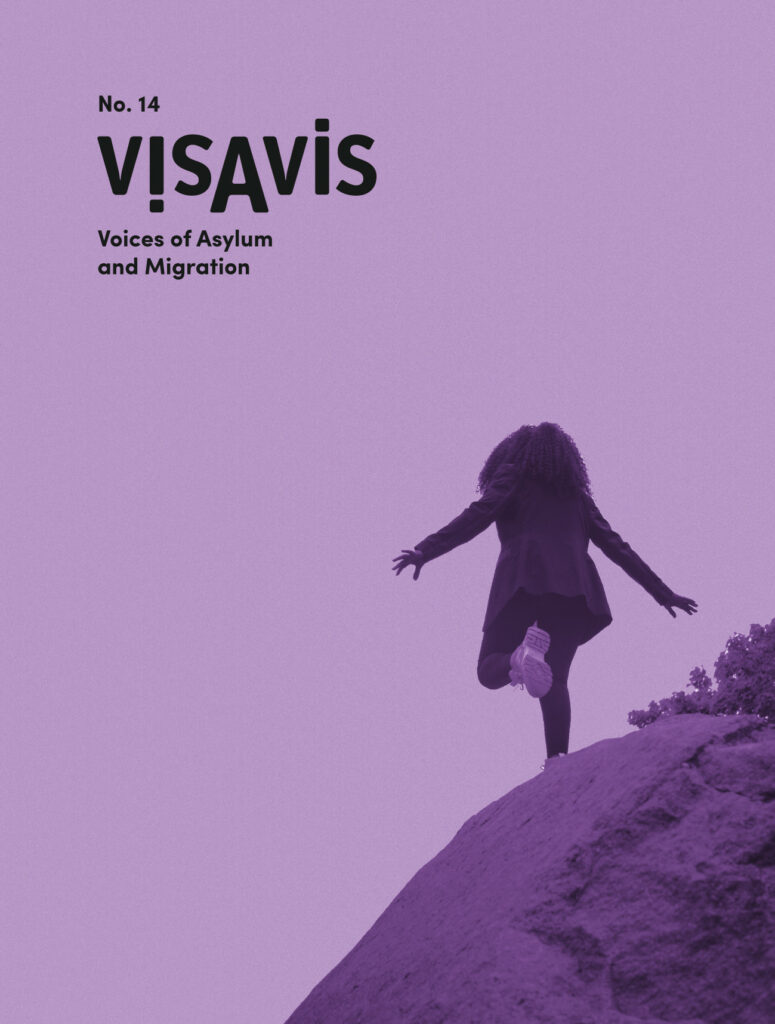Pictures by Lisbeth Rasch
The following travelogue takes us to southern Mexico, where – just as in the Trampoline House – there is a steady fight going on for the right to migrate. Migrants committed to this fight create new communities and find ways of defining themselves as more than “just migrants”
by Lisbeth Rasch
Half-buried in a giant heap of old women‘s clothes, sweating like a pig and listening to the ever-present tones of Mexican marriachi music, I am suddenly carried back to the culture house ‘Trampoline House’ in ever-grey Copenhagen.
I am volunteering in the migrants’ shelter at Ixtepec, Mexico, and the dusty, dry surroundings do not exactly resemble the grey streets of Nørrebro, Copenhagen. Here, the Central American migrants, I have met, do not have to fight with the same sort of unjust and complex asylum system, as the asylum seekers who use and create the Trampoline House face in their everyday life, and I am amazed with how little it takes to create a sense of community and humanity in both places. As we stand here sorting out the donated clothes – a bunch of volunteers, some of us Mexican, others European, but most are Central American – I realize what I like the most about places such as the Trampoline House and the migrants’ shelter…
From military chef to volunteer, from dish washer to activist
Claudio used to be a chef in the Guatemalan army. Lesbia was working as a paramedic in Honduras. Marcelo used to be a police officer in Guatemala, before he made it to the United States and worked for eight years as a dish washer, only to return to Guatemala for his father’s funeral. Kevin was working as a stylist and won “Miss Revelation” of Guatemala City just a few months before he decided to leave. They all became part of the ceaseless flow of Central American migrants that travel through Mexico on the rooftops of the old freight trains, taking them on a dangerous journey all the way to one of the world’s best surveilled borders where they try to cross by foot. Just another migrant in that never-ending stream of hopeful men and women of all ages, driven by some illusory “American Dream”.
A spiring community at the railways
The migrants’ shelter in Ixtepec, Oaxaca, in southern Mexico faces the railways, and every day when the old trains stop here, dozens of migrants jump off the rooftop and enter the courtyard of the shelter to get some food, water, a shower and a bed for a night’s rest. But, as Alberto Donis, who has been working at the shelter for the last three years, explains: “We also go further than that. We fight to improve the conditions on the journey for the migrants, and we always seek to spread the message about all the cases of injustice that are committed against the migrants”. Just as Claudio, Lesbia, Marcelo, Kevin and many others, Alberto came to the shelter as ”just another migrant”. And just as the others, he soon started to help out with different practical tasks at the shelter and soon felt part of the community, ”the family” at the shelter. A couple of days’ rest turned into weeks, and while the work of the shelter inspired feelings of solidarity and humanity in Alberto, he was also filled with frustration at witnessing the systematic injustice done to the migrants. ”I’ve seen so much injustice on the migrants’ route. Almost 99 % of the cases remain unpunished, and a great majority of the crimes are committed by the police”.
Travelling with the old freight trains, everyone is reduced to the category of a ”migrant” – stripped off his or her former identity, life and aspirations. But at the migrants’ shelter, people get a chance to join a community that not only entails safety and new friends, but most importantly gives them the chance to become more than ”just another migrant”. And by joining the fight to improve the conditions on the migration route and to stop the systematic crimes committed towards those who migrate, volunteering turns into activism with a greater purpose: ”For me, this shelter has been like a school”, Alberto states proudly.
Working at the shelter, I found myself not only moved by the feeling of humanity and friendship in midst of the emotional stress that people brought with them on the uncertain and dangerous journey. I was most of all impressed by how categories of ”volunteer” vs. ”migrant” – between those who apparently were ”helpers” and those who were ”in need of help” – were blurred.
From Mexico to Copenhagen: fighting for the right to migrate
Exactly this undoing of categories and this sense of community and friendship echoed what I had experienced at the Trampoline House of Copenhagen. Both at the Trampoline House and at the migrants’ shelter in Ixtepec, I was furthermore moved by the sense of pride that was so evident in all our daily work. A pride motivated by the notion that this was not only a shelter to eat and sleep, or a culture house to do yoga, theatre or learn Danish. These are important steps in a universal fight for the right to migrate – and more importantly, maybe: for the right to define yourself as more than just another migrant, wherever you are!
Read more about the migrant’s shelter
And about the Trampoline House
